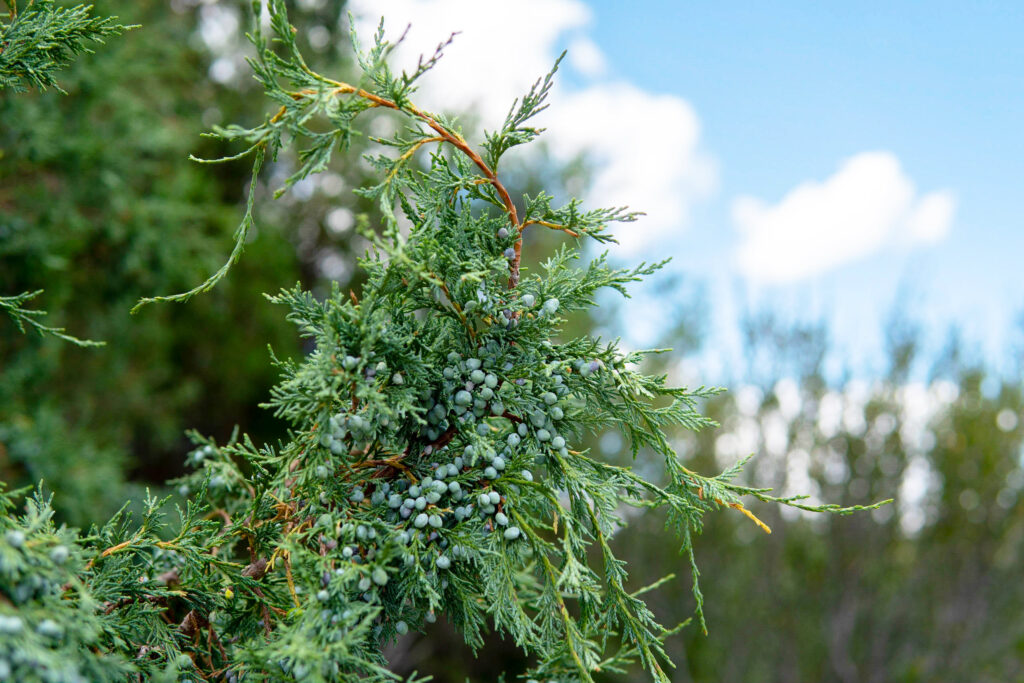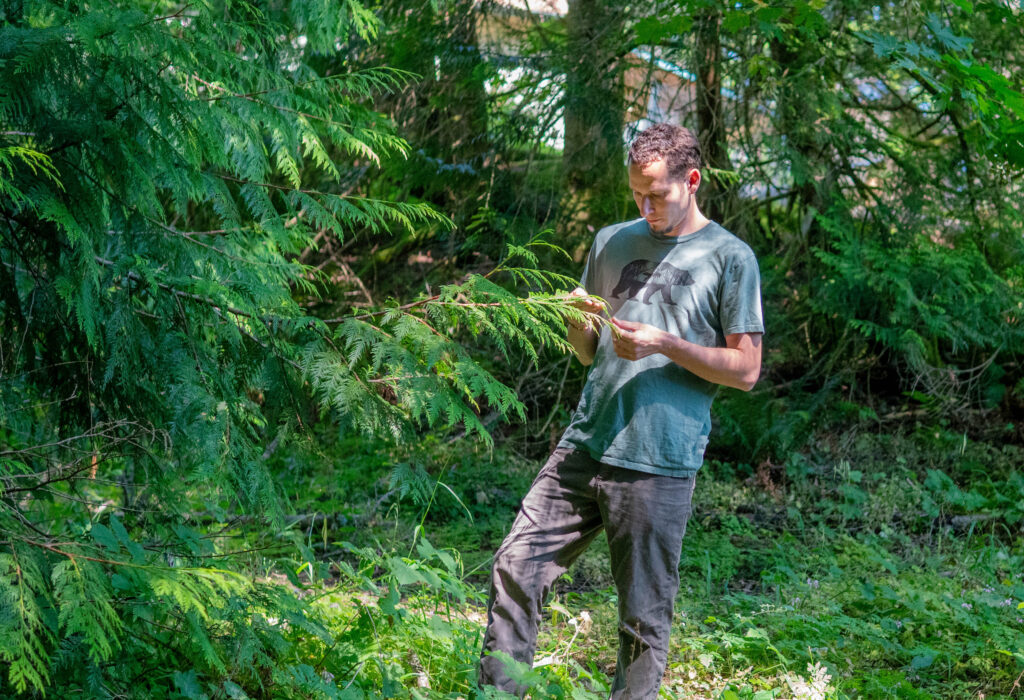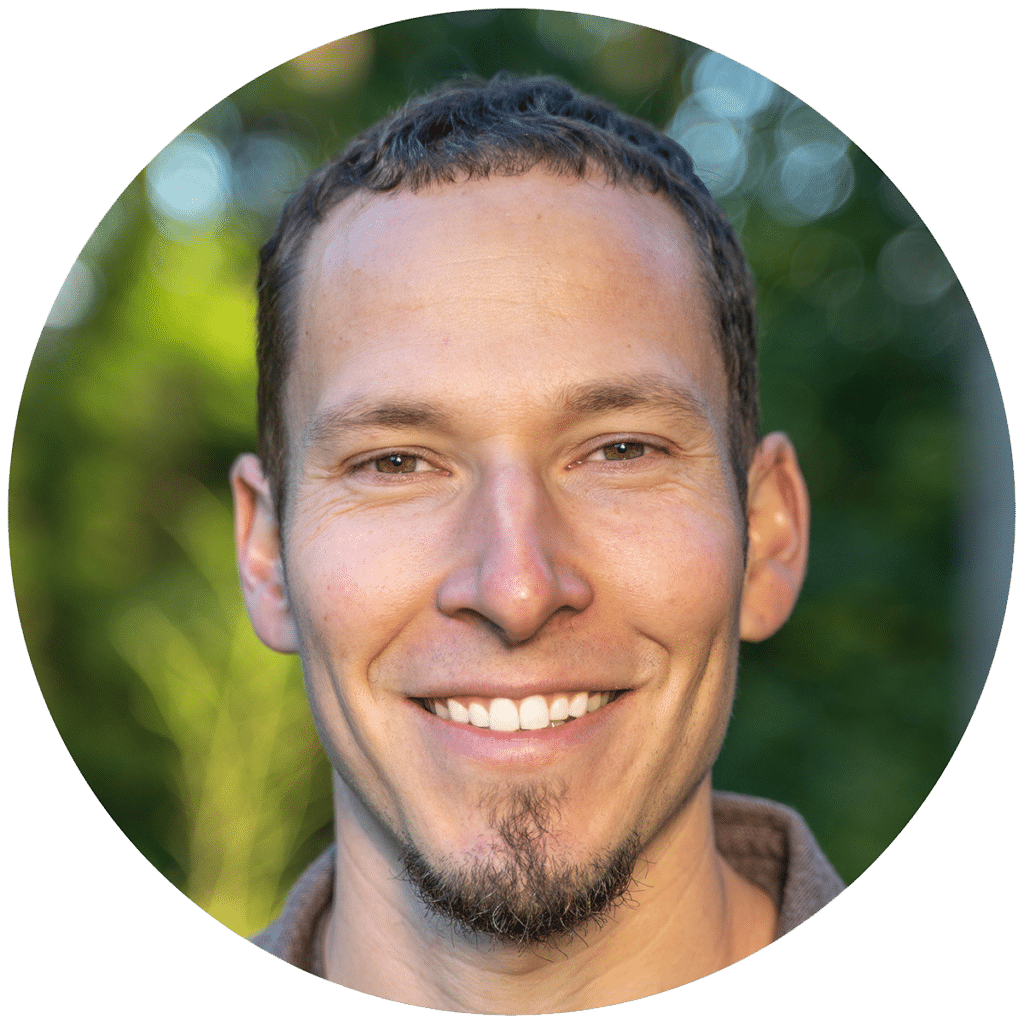So often today people rely on books and websites to learn information about plants and healing, which is totally fine. But when people limit themselves to these modes of learning, they’re missing out on the most ancient and intrinsic part of the herbal path.
To be completely honest, if you don't nourish your real-life connections to actual plants, like plant people have done for ages, there will always be something lacking within your work.
In this week's video, I wanted to share some important insights about what I call Bio-regional Aromatic Medicine, and the importance of learning about your local aromatic flora and making personal connections to the native plants growing around you.
We all get caught up in modern life: work, school, busy schedules. For me personally, running two businesses has me on my phone and computer a lot, and the plants have been calling me back to them for a while now to nourish my own connections I've developed with them over the years.
The current state of the world has us all spending more time at home, which has opened up the door for me to get outside more, into the forests and meadows to be with the plants one-on-one and be where my heart and spirit feel most at home. And it feels so good to have opportunities to do so.
Through my own meditations in the wilderness lately, I've felt called to share with you some potent insights that I know can help shift people's perspectives and shed light on the countless benefits of establishing and deepening our plant/human relationships with our local flora.

The Boundaries of Modern Aromatic Medicine
Today, we have countless aromatic plant materials we can easily buy with the click of a button from all around the world. But the fact is, everyone has their own local indigenous aromatic plants growing around them, often right in their own backyards! A lot of folks aren't even aware of this, but these are the plants we should all get to know the most...
The technology and commerce age we live in today has given people the option to easily buy plant products at a store or have a plant extract or herbal medicine delivered to their doorstep within 48-hours, ready and waiting for them before they even finish their morning coffee. Our ancestors would be amazed at how things have progressed!
This lightning-speed connection we've created for ourselves can be a huge blessing, but it can also take away from the beauty, sacredness, and teachings on our plant path if we're not careful. For many, especially beginners in the herbal world, this new paradigm of doorstep-delivered plant medicine can rob them of what it all really comes down to: the actual plants.
This convenience can create boundaries that prevent us plant people from going into the wilderness where the magic awaits us, spending time with plants, and harvesting our medicines with our own hands. A lot of people are missing out on touching, smelling, and immersing themselves in the green world of the plants, which inspires feelings of sacredness, deeper meaning and understanding. Our real-life experience of a living plant imprints within our hearts a lasting impression that can become our personal medicine and wisdom.

Photo: Jacquie Bird-Day
People have established personal relationships with their local plants to learn their wisdom for ages to maintain optimal health, provide nourishment, for pleasure, and for maintaining spiritual health. For our ancestors, nature was their classroom. Before Google searches, before books and materia medica were available, plant people learned the medicine and teachings of the plants from the actual plants.
There's nothing wrong with learning from books of course, but to solely rely on them or online programs without having these living experiences in the wilderness with plants is kind of like learning all about surfing but never actually paddling out and experiencing the raw feelings that come from catching a wave.
Just being out in nature in the first place, the cathedral of the plants, puts us in a totally different state of mind than when we’re learning about plants through a computer screen or reading words on a page. The act of going out to meet a plant in the wilderness tethers you to the Earth, strengthens your roots, feeds your spiritual connection to nature, and gives you a real-life connection that a book can’t ever offer you by itself.
There’s nothing like going out to be with a plant, absorbing all the information you can about it through your senses and observation, meditating with it, and then taking a part of it home to burn as incense or make into medicine. This really brings your practice to a new level and makes the process that much more meaningful.
Unlock Your Free Issue Of...
🌿 The Aromatic Medicine Garden Membership 🌿
Are you ready for a deeper, holistic dive into the world of aromatic plants? See what our membership is all about with your free sneak peek issue, including an hour-long plant talk and a 21-page plant profile pdf full of recipes, gardening & harvesting insights.

Bio-Regional Aromatic Medicine
A bioregion is an ecologically and geographically defined area, interconnected with communities large to microscopic, where plants, animals, both human and non-human, even rocks and seemingly inanimate things, inhabit together as one. Bioregionalism is a way of living in harmony with the communities and connections within one’s bioregion. Through these connections, and through tending to the relationships of the land, nature, and the plant and animal kingdoms, people become more involved, interacting, participating members of their bioregion—awakening to the blessings of the natural world, and in turn, becoming more an integral part of the land in which they live.
When you live in a particular region for a few years, or were born and raised and still reside in a region, the native plants growing in the same land are the most effective plants to assist in your healing.
When you live in a land with its unique climates, elemental balances, weather patterns, seasonal changes, unique star and planetary alignment overhead, specific levels of minerals and nutrients in the soil, your body is accustomed specifically to the region you live in through these forces.
As you eat the local foods grown in your soil, drink the water from underground, breathe in the air, and the subtle medicines of the plants on the breeze, all of these influences literally become a part of you over time.
The herbs native to your region also contain all of these aspects and are influenced by the same forces, making them the most potent match for your body’s specific needs as they understand the living architecture of the bioregion you both call home. These local plants have just the right mixture of energies and medicine to help you achieve greater balance in your health and maintain that balance over time.
People indigenous to a place were often much healthier than people are today because they simply incorporated their local medicinal and aromatic plants into their diets, into teas, and burned them as incense ceremonially or for their medicine and immunity boosting properties.
Within every bioregion on Earth, there’s a plant for virtually every sickness. This piece of wisdom really makes sense when we look at ancient medical systems of the world like Traditional Chinese Medicine, Tibetan Medicine, Ayurveda, Native American Medicine, Amazonian medicine, Egyptian medicine—each healing system has their own local indigenous herbs for treating nearly every disease and imbalance.

Localizing Your Plant Practice
Establishing a deep relationship to as many wild plants as you can growing in your bioregion will shift your perspective and deepen your relationship and connection to nature and plants in general, and create priceless experiences you’ll remember for the rest of your life.
Over time, you can learn how and when to harvest aromatic botanicals as well for natural incense and medicine, and share them with friends and family. Practicing this full-circle approach to plant medicine is incredibly rewarding and gives more meaning to your work, creations, remedies, or products. And the more you learn how to harvest and process yourself, the more money you'll save, and the smaller your carbon footprint becomes.
I suggest starting with going out to meet one or two local aromatic plants and beginning a dialogue with a new plant, or strengthening an existing relationship. If you have trouble knowing where to start, conifers or evergreen trees are often the easiest to find as they grow all over the world. These are trees like Pine, Fir, Cedar, Spruce, and Cypress. You can also buy a local plant identification guide to help you in your search, or join a local botanical group.
Always be sure you know what plants you’re working with before you use them for medicine. Some plants are poisonous or toxic. If you’re not certain about a plant, learn more about it before you use or harvest it, or have a professional identify it for you.
With that being said, take a walk outside today and go sit in front of an aromatic plant or tree and observe it in its natural habitat, smell it, touch it, meditate with it, and see what beauty and mysteries unfold for you.

Dive into the ancient world of aromatic plants with the Materia Aromatica ebook, an in-depth guide to the therapeutic, spiritual, and aesthetic uses of the world's favorite incense plants. This rare resource offers detailed plant monographs and explores how incense has been used across cultures for healing, ritual, and pleasure for ages.
Article & Video by Evan Sylliaasen

Evan Sylliaasen is the founder of the Northwest School of Aromatic Medicine and Higher Mind Incense. For the past decade his incense company has been a leader in sustainability and conscious sourcing of aromatic plants. As the head instructor of his online school, he teaches aromatherapists, incense lovers, herbalists, and spiritually-minded folks the traditional art of incense crafting, incense as medicine, and the art of wild-harvesting aromatic plants responsibly.
Evan lives with his family in the foothills of the Olympic Mountains of Washington state. He channels his creative passions through writing, photography, wood working, craftsman building, and music. When he’s not working, he’s out in the garden, forest and fields, walking along rivers, beaches, or in the mountains breathing deeply.
A special thanks to Jacquie Bird-Day (videography).
© 2020-2021 The Northwest School of Aromatic Medicine. All rights reserved.
*The statements above have not been evaluated by the FDA. This article is not intended to diagnose, treat, cure, or prevent any disease. This article should not be taken as medical advice. Please consult your physician before you use this information for health purposes.
